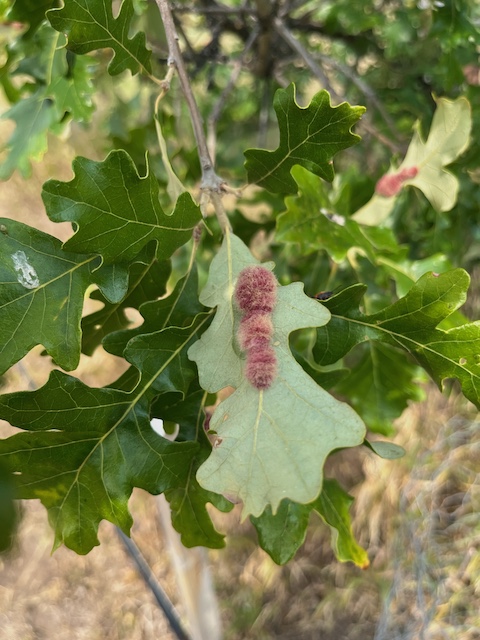
Woolly oak gall
Cosmetic
Woolly oak galls are a peculiar thing found on both young and old oak leaves and are completely harmless to the tree.
These weird woolly galls are caused by a tiny, stingless Cynipid wasp. The adult wasp lays its egg into the leaf tissue and injects a plant hormone which stimulates the surrounding cells of the leaf to produce this strange looking tissue. The egg hatches into a larva which then is protected and nurtured inside the leaf tissue which is high in protein and carbohydrates to provide the developing larva with a readily available food source.
These galls eventually become darker and fall off the leaves later in the season. Once pupated, the larvae burrow in the soil below the tree, where they pupate and emerge as adults the following spring.
Galls are an example of commensalism: a relationship in which one organism benefits while the other is neither harmed nor helped.
Description
Woolly oak galls have a distinctive woolly texture that some say resembles a caterpillar. The galls tend to be a pinky-tan colour when newly formed but become darker brown as they age.
The galls are found so commonly on oaks that they have been thought of as typical structures of the plants. Some early botanical drawings of oaks have even included galls as common structures.
Damage
The feeding larvae inside the gall do not cause any damage or impair the growth of the tree. The galls are merely a cosmetic problem.
Control
No control is needed for oak galls.
To reduce the number of galls next season, rake up leaves to prevent the pupae from over-wintering in the soil.
Do not remove the leaves from the tree as the leaves are still capable of photosynthesis, which benefits the tree.
Insecticides are completely ineffective because the larvae are protected inside the leaf gall structure.

